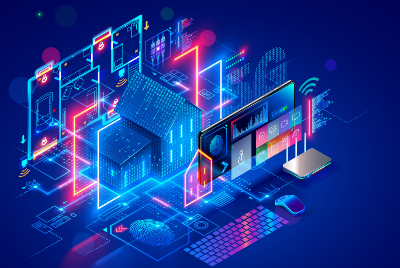
Developing global standards for Vehicle-to-Everything (V2X) communication is essential for ensuring the interoperability, safety, and reliability of connected vehicles and smart transportation systems worldwide.
Standardization enables vehicles from different manufacturers, operating in various regions, to communicate seamlessly with each other and with infrastructure, facilitating the widespread adoption of V2X technology.









Here’s an overview of the key aspects and challenges involved in developing global standards for V2X communication:
1. Importance of Global Standards
Interoperability: Global standards ensure that vehicles and infrastructure from different manufacturers and regions can communicate effectively, regardless of the underlying technology or network provider.
Safety and Reliability: Consistent standards help ensure that V2X communication systems meet stringent safety and reliability requirements, which is critical for applications like autonomous driving and emergency vehicle coordination.
Scalability: Standardization allows for the scalable deployment of V2X technology, enabling widespread adoption across different markets and regions without the need for extensive modifications.
Cost Efficiency: By adopting common standards, manufacturers can reduce development costs, avoid duplication of effort, and accelerate the deployment of V2X solutions.
2. Key Areas of Standardization
Communication Protocols: Defining common communication protocols is crucial for ensuring that data is transmitted and received correctly across different V2X systems. This includes protocols for Vehicle-to-Vehicle (V2V), Vehicle-to-Infrastructure (V2I), and other forms of V2X communication.
Frequency Bands and Spectrum Allocation: Standardizing the frequency bands used for V2X communication helps prevent interference and ensures that V2X systems can operate reliably. This requires coordination between global regulatory bodies to allocate appropriate spectrum for V2X applications.
Data Formats and Message Sets: Developing standardized data formats and message sets ensures that vehicles and infrastructure can interpret and act on the information they receive. This includes standardizing messages related to vehicle speed, location, braking, and hazard alerts.
Security and Privacy: Establishing global standards for the security and privacy of V2X communications is essential to protect against cyber threats and ensure that sensitive data is handled appropriately. This includes encryption protocols, authentication mechanisms, and privacy safeguards.
Testing and Certification: Standards for testing and certification ensure that V2X systems meet global safety and performance criteria before they are deployed on public roads. This includes developing standardized testing procedures and certification processes.
3. Key Organizations Involved in V2X Standardization
3rd Generation Partnership Project (3GPP): 3GPP plays a critical role in defining cellular V2X (C-V2X) standards as part of its work on 5G and LTE. C-V2X is a key technology for V2X communication, leveraging cellular networks to provide reliable connectivity.
Institute of Electrical and Electronics Engineers (IEEE): IEEE has developed standards like IEEE 802.11p, which is used for Dedicated Short-Range Communications (DSRC) in V2X applications. DSRC is a key technology for direct communication between vehicles and infrastructure.
International Telecommunication Union (ITU): The ITU is responsible for coordinating global spectrum allocation and developing standards for wireless communication, including those used in V2X systems.
European Telecommunications Standards Institute (ETSI): ETSI develops standards for Intelligent Transport Systems (ITS) in Europe, including V2X communication. ETSI’s work is closely aligned with global efforts to standardize V2X technologies.
SAE International: SAE develops standards related to automotive engineering, including V2X communication protocols and message sets. SAE standards are widely adopted in the automotive industry.
4. Challenges in Developing Global Standards
Regional Differences: Different regions may have varying regulatory requirements, spectrum allocations, and infrastructure capabilities, making it challenging to create a one-size-fits-all global standard.
Technological Divergence: Multiple V2X technologies, such as DSRC and C-V2X, have emerged, leading to debates over which technology should be standardized globally. While both have merits, achieving consensus on a single global standard is difficult.
Industry Competition: Competition among technology providers and automotive manufacturers can create barriers to standardization, as companies may push for standards that favor their own technologies or business models.
Regulatory Coordination: Global coordination among regulatory bodies is required to align spectrum allocations and regulatory frameworks, which can be a complex and time-consuming process.
Security Concerns: Standardizing security protocols for V2X communication is particularly challenging due to the need to balance robust security with the performance requirements of real-time communication.
5. Steps Toward Global Standardization
Collaboration Between Stakeholders: Governments, regulatory bodies, automotive manufacturers, technology providers, and standardization organizations must work together to develop and adopt global standards for V2X communication. Collaborative efforts, such as industry consortia and public-private partnerships, can help bridge gaps and align interests.
Harmonization of Regional Standards: Regional standardization efforts should be harmonized to create a coherent global framework. This involves aligning regional standards with international guidelines and promoting mutual recognition of standards and certifications.
Pilot Programs and Interoperability Testing: Conducting pilot programs and interoperability testing across different regions and technologies can help identify challenges and refine standards. These initiatives provide valuable insights into how V2X systems perform in real-world conditions.
Continuous Updates and Revisions: As V2X technology evolves, standards must be continuously updated and revised to reflect new developments, address emerging challenges, and incorporate feedback from stakeholders.
6. Future Outlook
Convergence of Technologies: Over time, the industry may converge on a unified V2X standard that incorporates the strengths of different technologies, such as combining elements of DSRC and C-V2X. This convergence will likely be driven by the need for interoperability and the growing adoption of 5G.
Global Adoption and Implementation: As global standards are established, V2X technology will become more widely adopted, leading to safer and more efficient transportation systems. The successful deployment of V2X will require ongoing collaboration and commitment from all stakeholders.
Innovation and New Applications: Standardization will pave the way for innovation in V2X applications, enabling the development of new services and use cases that enhance mobility, safety, and user experience.
Conclusion
Developing global standards for V2X communication is a complex but essential task that will determine the future of connected and autonomous vehicles. By establishing common protocols, spectrum allocations, and security measures, global standards will ensure that V2X systems can be deployed at scale, providing the foundation for safer, smarter, and more efficient transportation networks. The ongoing collaboration between industry stakeholders, regulators, and standardization bodies will be key to achieving this vision.

Leave a Reply